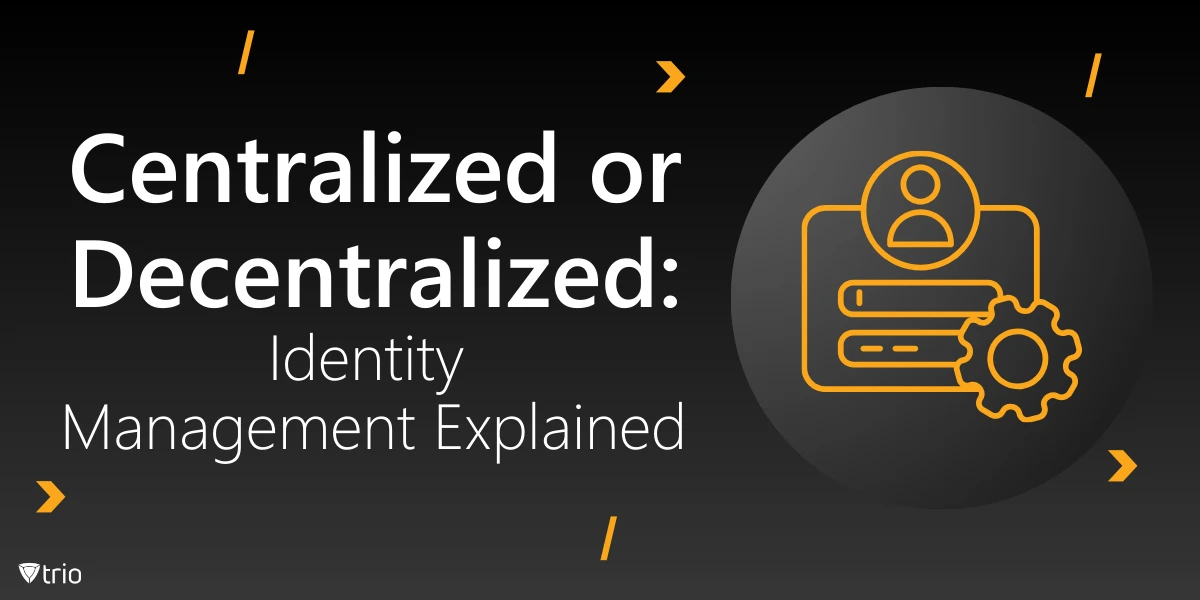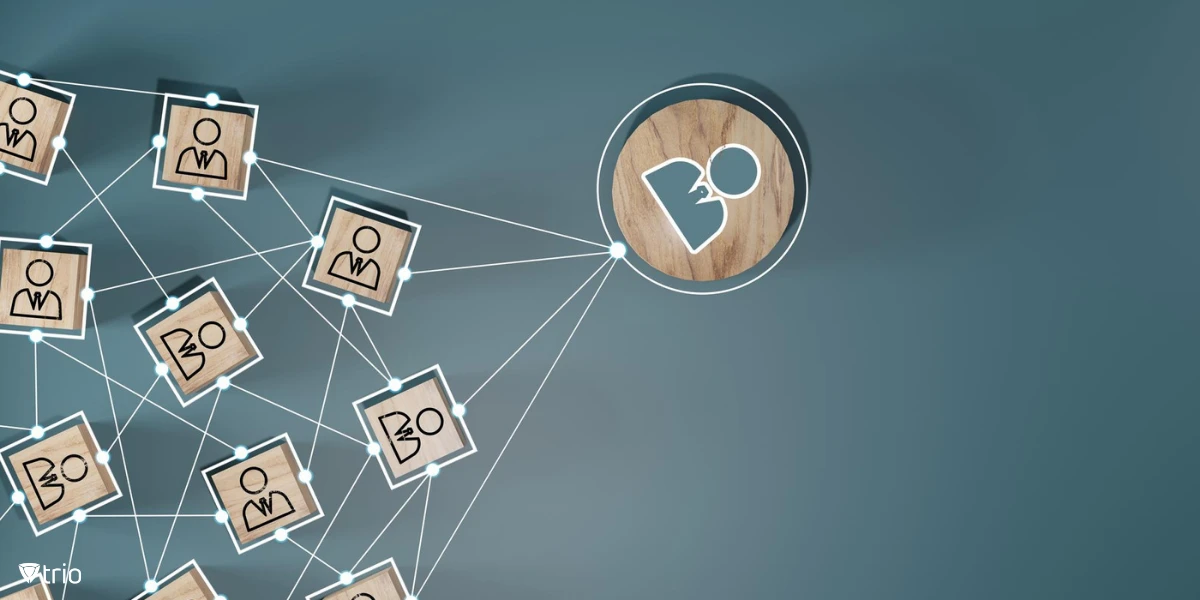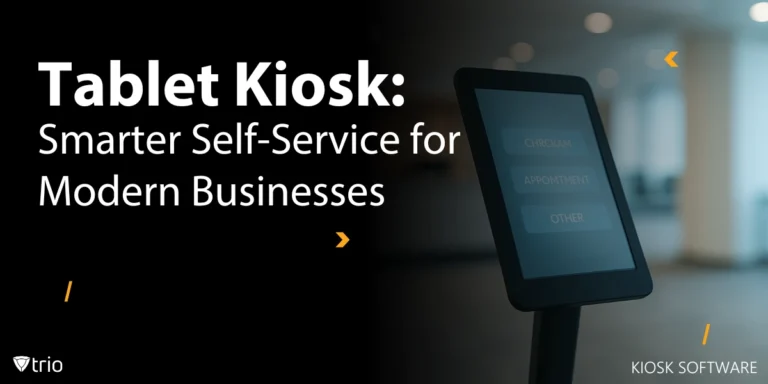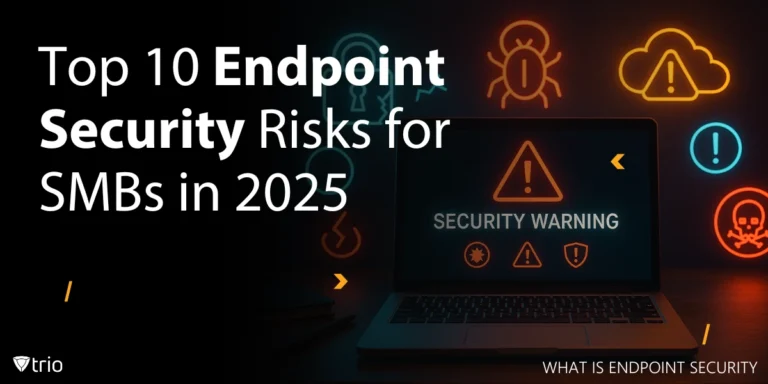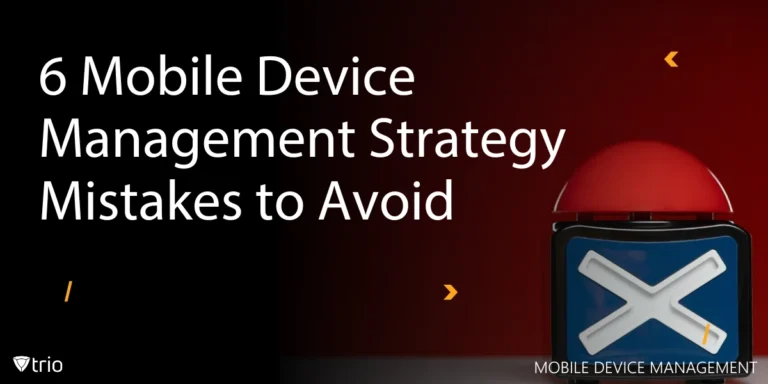As organizations grow and manage an increasing number of users, implementing effective identity management becomes a critical task. A well-planned identity management strategy ensures data security, user convenience, and efficient access control. In the debate of centralized vs decentralized identity management, choosing the right approach can significantly impact how businesses handle user credentials, protect personal information, and respond to data breaches. In this blog, we’ll explore both centralized and decentralized identity management systems, their pros and cons, real-world examples, and how our simplified MDM solution, Trio can support your business.
Understanding Centralized Identity Management
To help you choose whether centralized or decentralized identity management is the right fit for your organization, it’s important to know the differences. Let’s delve deeper into understanding centralized identity management and its pros and cons.
Centralized Definition and Overview
In centralized identity management, user identities and their associated data are stored in a central database. This means a single, central authority is responsible for managing user credentials, verifying identities, and granting access to various systems and applications. Centralized systems often utilize Single Sign-On (SSO), allowing users to access multiple services using a single set of credentials.
The centralized approach simplifies user management, often integrating tools like profile management to provide streamlined user experiences. By having all identity information stored in one place, companies can quickly manage access and reduce the complexity of integrating new applications. However, this model also introduces certain challenges, especially regarding data security and privacy.
Centralized Identity Management: Pros and Cons
A key advantage of centralized identity management is the ease of use for both users and IT teams. Since all user data is held in a single repository, administrators can manage user identities efficiently. This setup reduces redundancy and makes it easier to enforce consistent security policies across all systems using Multi-Factor Authentication (MFA), enhancing overall security.
On the downside, the centralized approach creates a single point of failure. If the central database is compromised, it can expose a vast amount of personal information, leading to significant data breaches. Additionally, users may have less control over their identity information, as the central authority retains full control of the data.
Exploring Decentralized Identity Management
Now that centralized identity management is clear, let’s explore decentralized identity management’s approach and its pros and cons.
Decentralized Definition and Approach
In contrast to centralized identity management, decentralized identity management eliminates the need for a central authority by distributing control across multiple entities. This approach leverages technologies like blockchain and decentralized identifiers (DIDs), allowing users to maintain complete control over their personal data. Instead of a single entity verifying user identities, users can present verifiable credentials to access various services, reducing the risk of data breaches and enhancing user privacy.
The decentralized approach is built on the principle of self-sovereign identity, where users own and manage their identity information. This model offers a more privacy-focused solution and minimizes the reliance on a central database that can become a target for cyberattacks.
Decentralized Identity Management: Pros and Cons
One of the biggest benefits of a decentralized approach is the enhanced security it provides. By distributing identity information across a network, decentralized systems make it harder for attackers to compromise user credentials. Users also gain greater control over their personal data, deciding who can access their information and for what purpose.
However, managing decentralized identities can be challenging. The technology is relatively new and may require significant changes to existing infrastructure. Implementing features like SCIM Provisioning can help streamline the process by automating user identity and access management tasks, ensuring efficient and secure identity handling.
Centralized vs Decentralized Identity Management: Real-World Examples
Examining real-world use cases of centralized and decentralized identity management can provide a clearer picture of how these approaches function in different scenarios.
Centralized Identity Management Examples
A classic example of centralized identity management is the use of SSO solutions. These platforms manage millions of users' identities and provide a seamless login experience across a wide array of services. By using a central database, these companies can easily enforce security policies and quickly detect suspicious activities through robust IAM Best Practices.
Another centralized example is in the corporate setting, where an organization may use a central identity management system to control employee access to internal applications. This allows IT administrators to streamline the process of granting access, especially as the number of users grows.
Decentralized Identity Management Examples
An example of decentralized identity management is the use of blockchain-based solutions. These platforms use decentralized identifiers (DIDs) to enable users to control their identity information directly. Instead of relying on a central authority, users can use verifiable credentials issued by trusted sources, enhancing privacy and security.
Another example can be seen in the emerging field of self-sovereign identity, where individuals can create their own digital identities without relying on a central entity. This approach is gaining traction in industries like healthcare, where protecting personal information and data security is crucial.

Centralized vs Decentralized Identity Management: Choosing the Right Approach
Selecting between centralized and decentralized identity management depends on your organization's specific needs, security requirements, and user experience goals. By going over the considerable factors and the overall pros and cons we aim to help you to choose the best fitting approach.
Factors to Consider When Choosing Between Centralization and Decentralization
When choosing between centralization and decentralization, several factors come into play, including the size of the organization, regulatory requirements, and user experience. For smaller organizations, centralized systems may offer a simpler and more cost-effective solution, especially if they already rely on cloud-based services with integrated identity management features.
On the other hand, organizations handling sensitive data or requiring enhanced security may benefit more from a decentralized approach. This model provides better privacy protection and reduces the risk of widespread data breaches, but it may require more sophisticated infrastructure and user training.
Centralized vs Decentralized Identity Management: Pros and Cons
While centralized systems excel in ease of use and streamlined access, they can be vulnerable to attacks targeting the central database. Conversely, decentralized systems prioritize privacy and security but can be complex to implement and manage. Implementing Fine Grained Access Control and utilizing Access Control Granularity can help strike a balance between user control and system security. Understanding the specific needs and risks of your organization will help in making an informed decision.
How Trio Can Support Your Identity Management Strategy
Whether you opt for a centralized or decentralized identity management approach, Trio's simplified MDM solution offers the tools and flexibility needed to implement and manage your strategy effectively. Trio integrates SSO capabilities for centralized systems, simplifying user access across devices and applications. For those exploring decentralized identity management, Trio can assist in managing every single device, and implementing secure, verifiable credentials and decentralized identifiers.
Ready to Experience the Benefits of Trio?
Explore how Trio can streamline your identity management processes and enhance data security. Get a free demo to see how our solution can support your organization today.
Conclusion
The debate of centralized vs decentralized identity management continues to evolve as new technologies and security concerns emerge. By understanding the benefits and drawbacks of each approach and evaluating real-world examples, organizations can make better decisions to protect user credentials and verify their identity effectively. Whether you choose a centralized or decentralized system, focusing on data security, user experience, and regulatory compliance is key.
Get Ahead of the Curve
Every organization today needs a solution to automate time-consuming tasks and strengthen security.
Without the right tools, manual processes drain resources and leave gaps in protection. Trio MDM is designed to solve this problem, automating key tasks, boosting security, and ensuring compliance with ease.
Don't let inefficiencies hold you back. Learn how Trio MDM can revolutionize your IT operations or request a free trial today!
